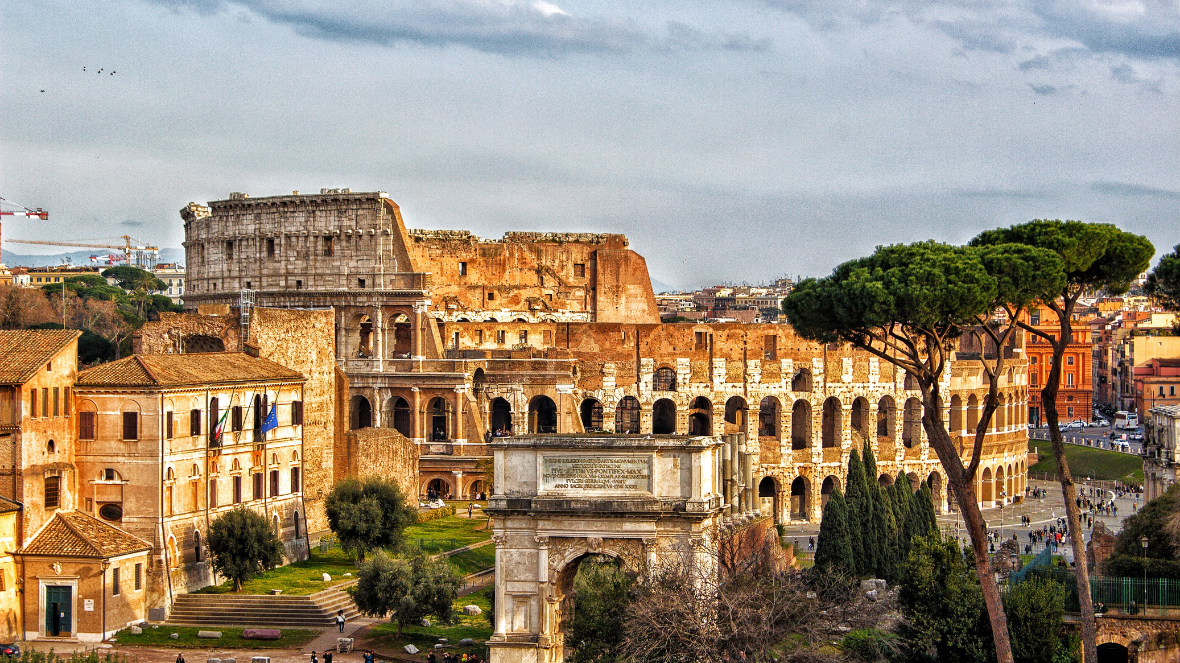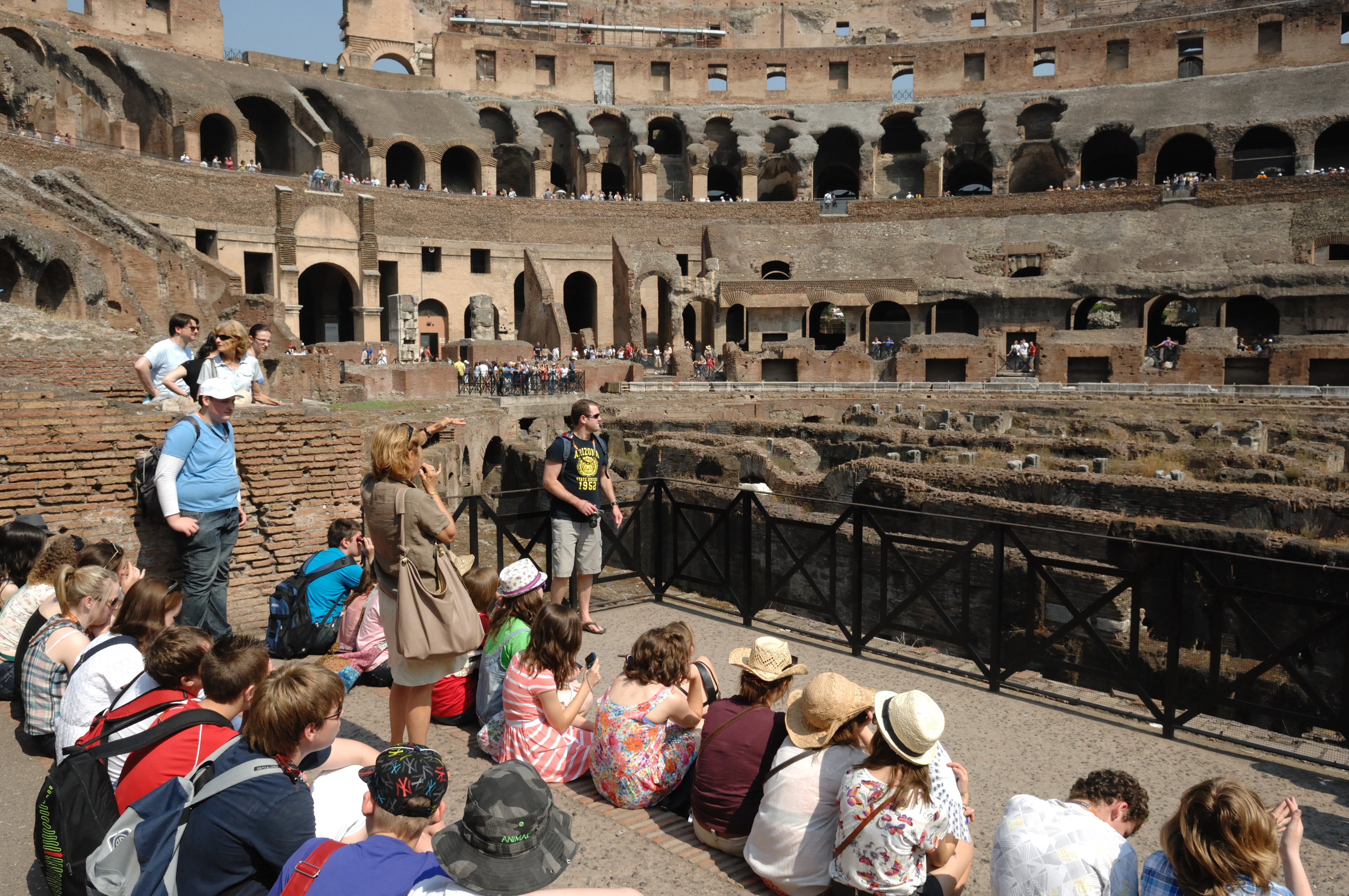The best historical sites to visit in Rome with students
Ready to step back in time? If you're gearing up for an educational trip to Italy, look no further than the captivating capital, Rome. Imagine your students exploring the paths of ancient Romans while discovering the city’s rich culture, iconic landmarks, and timeless treasures.
With an abundance of historical sites just waiting to be explored, your school trip promises to be an unforgettable blend of adventure and learning. So, without further ado, let’s dive into why it should be your next destination and explore some of the best historical sites in Rome!
Why visit Rome for history school trips?
Rome is an unparalleled destination for history school trips, offering a fascinating blend of ancient archaeological wonders, stunning Renaissance art, and a lively modern culture. Visiting Rome allows students to experience history firsthand, bringing the past to life in ways no textbook ever could.
Here's why Rome is perfect for history buffs:
Layers of history
Unearth thousands of years of history in one city. During history trips, you can marvel at the ancient Colosseum, where gladiators once fought for their lives, or explore hidden underground layers of the Basilica of San Clemente (located in Piazza San Clemente), which reveal early Christian structures. These experiences connect students with the past, showing how history is built layer upon layer.
Interactive learning
Participate in hands-on archaeology workshops at places like the Appian Wa (located in southeastern Rome), where you can stroll through one of the oldest, most prestigious roads in Rome and learn excavation techniques. Historical reenactments at the Roman Gladiator School let students train like gladiators, while guided tours of iconic sites, like the Vatican Museums and the Sistine Chapel, provide expert commentary on the spiritual heart of the Catholic Church.
Delicious food and culture
Beyond history, enjoy authentic Italian cuisine like pizza al taglio (Roman-style pizza) or gelato from iconic spots like Giolitti (just a 5-minute walk from Termini Station and 20 minutes away from the Colosseum). Students can also visit bustling markets throughout their history trip such as Campo de' Fiori, near Piazza Navona. Open Monday to Saturday, it gives students a taste of local life and culture, showcasing fresh produce and artisan goods.
6 best historical sites in Rome
Now, let's explore the top historical sites in Rome that you and your class can visit. Each location holds a unique story within its walls, from the grandeur of the Pantheon to the ruins of the Roman Forum, there are endless opportunities for discovery!
1. The Colosseum
One of the most renowned historical sites in Rome, this grand amphitheatre once echoed with the roars of enthusiastic crowds (an estimated 50,000 to 80,000 to be exact), the clash of gladiatorial combat and the roar of wild beasts! Commissioned by Emperor Vespasian in 72. A.D., the Colosseum stands as a symbol of ancient Rome's architectural prowess and entertainment culture.
Students on history trips can wander through the Hypogeum’s labyrinth of tunnels, which held enslaved people, animals, and gladiators before they fought in the arena. Don’t forget to visit the Arch of Constantine, a triumphal arch built in 315 A.D. that commemorates Constantine’s victory at the Battle of the Milvian Bridge.
The Colosseum is located at Piazza del Colosseo, 1, 008184, Rom and is open from 8:300 AM until one hour before sunset - closing times vary throughout the year. To get there via public transport, take the Metro B line to Colosseo station.
2. Roman Forum and Palatine Hill
Once a wet grassland, the Roman Forum was drained in the 7th century B.C. and soon became the political epicentre of the capital city. Today, students can explore the remains of monumental temples, basilicas, and government buildings that once shaped the empire, offering a fascinating glimpse into the daily lives of emperors, senators, and ordinary citizens.
One of the most notable structures is the Temple of Saturn, which was dedicated to the god of wealth, agriculture, and liberation. Just nearby, the Temple of Vesta, with its iconic circular design, housed the sacred flame tended by the Vestal Virgins, symbolizing the eternal life of Rome.
While you’re there, why not take in the panoramic views of Rome from Palatine Hill? Known as the legendary birthplace of Rome, it was once home to the city’s elite. Here, students can explore the ruins of the House of Augustus, with its beautifully preserved frescoes, and the sprawling Domus Flavia, part of Emperor Domitian’s palace.
Open daily from 9:00 AM, the main entrance to the Roman Forum and Palatine Hill area is on Via di San Gregorio, near the Colosseum and is within easy walking distance from the Colosseo station.
3. The Spanish Steps
No school trip to Rome is complete without a visit to the iconic Spanish Steps. This elegant staircase was built in Rococo style between 1723 and 1726, connecting the Piazza di Spagna with the Trinità dei Monti church. Fun fact: It is the widest staircase in Europe!
Not only is it one of the best historical sites in Rome, but the Spanish Steps have also long been a popular gathering place for artists, poets, and writers, and they continue to be a favourite spot for people-watching. Your students can climb the 135 steps, pausing on the landings to admire the views and soak up the vibrant atmosphere.
You can find the Spanish Steps in Piazza di Spagna, 00187 Roma, just a short walk from central Rome or easily accessible via the Metro A line (Spagna station). If you’re visiting in the spring, you’ll have the chance to admire the vibrant pink azaleas that decorate the steps.
4. The Pantheon
Step into the iconic Pantheon, a marvel of ancient engineering and religious significance. Renowned for its massive dome and central oculus that symbolically connects the interior to the cosmos, this temple-turned-church has captivated visitors from around the world. Remarkably, it has remained almost entirely intact since its construction between 25 and 27 B.C.
Students on art and design trips or religious studies trips will be fascinated by the ingenuity of the Romans and the Pantheon's role as a temple originally dedicated to the twelve ancient Gods. Audio guides and tours are available to learn more about its construction and role in Roman religion.
It is open from Monday to Saturday: 9:00 AM - 6:00 PM, and Sunday: 9:00 AM - 1:00 PM. To get there, you can walk from the city centre if you're nearby. Otherwise, use public transportation like buses (30, 40, 62, 64, 81, 87 and 492) or the metro by taking Line A and stopping at Barberini station. Tickets must be purchased in advance to enter.
5. Catacombs of Rome
Descend into the eerie depths of the Catacombs of Rome, a labyrinthine network of underground tunnels and burial chambers spanning hundreds of kilometres. Once the final resting place for Jewish, pagan, and early Christian citizens, it offers students a unique perspective on Roman history, revealing the lives and beliefs of those who practised Christianity in secret.
While there are many catacombs in and around Rome, here are 3 of the most well-known:
Catacombs of Callixtus: Located on the Appian Way, these 2nd-century catacombs house the Crypt of the Popes, where nine popes were buried. They are currently closed for the winter holidays from January to February but are typically open daily (except Wednesdays) from 9:00 AM - 12:00 PM and 2:00 PM to 5:00 PM.
Catacombs of Sebastian: Also situated on the Appian Way, these catacombs are named after Saint Sebastian, a Roman soldier martyred for his Christian faith. Fun fact: They are believed to have been a place of pilgrimage in the early Church. It is open daily from Tuesday to Sunday, 09:15 AM - 17:15 PM (closed on Mondays).
Catacombs of Priscilla: Found on Via Salaria, these catacombs are known for their beautiful frescoes, including the earliest known depiction of the Virgin Mary. They also contain a Greek Chapel with well-preserved 3rd-century paintings. Opening times are Tuesday to Sunday from 9:00 AM - 12:00 PM, and 2:00 PM - 5:00 PM (closed Mondays).
6. Baths of Diocletian
Wrap up your school trip with an engaging exploration of ancient Roman leisure and wellness at the Baths of Diocletian. Completed in 306 A.D., this sprawling complex featured grand halls, intricate mosaics, and a range of bathing facilities, from frigidariums (cold baths) to caldariums (hot baths).
More than just a place for bathing, it also served as a social hub for citizens to relax, exercise and take part in communal activities like philosophical discussions, and even cultural events. Students can explore specific spaces such as the Palaestra, an open-air courtyard or the Teatro di Diocleziano, a theatre that hosts public performances.
The Baths of Diocletian are located at Viale Enrico De Nicola, 79, 00185 Roma. You can easily reach the site via the Metro A/B line (Termini station), just a short walk away. The Baths are open Tuesday to Sunday from 9:00 AM to 7:30 PM, with the last entry at 7:00 PM.
Extra tips for planning your historical trip to Rome
As you can see, each of these iconic landmarks offers a unique glimpse into different aspects of life in Rome, spanning ancient history, religious traditions, and architectural innovations.
But as you plan your next school trip to Rome, there are a few important things to keep in mind to ensure the experience is as enriching, smooth, and memorable as possible:
- Best time to visit: Spring (April-May) and Autumn (September-October) are ideal times for a school trip to Rome. During these months, temperatures are generally mild, ranging from 15°C to 25°C, making it comfortable for walking tours and outdoor activities. Plus these periods fall outside the peak summer tourist season, meaning you'll encounter fewer crowds at popular attractions.
- Transportation: Rome has excellent public transportation systems that are both efficient and affordable. The metro has three main lines (A, B, and C) that connect key attractions such as the Colosseum, Vatican City, and the Spanish Steps. Buses and trams also provide wider coverage to areas not served by the metro, such as Trastevere or the Appian Way.
- Booking tickets: To make the most of your time, purchase tickets online in advance. This is especially important for sites like the Colosseum, Vatican Museums, and Borghese Gallery, which often have long lines, particularly during peak seasons. Skip-the-line tickets or guided tour packages can save hours of waiting, and many attractions offer special group rates or educational tours for schools, so it’s worth checking these when booking.
- Accommodation: Choose accommodation that is within easy reach of the historical sites you plan to visit. Consider staying in central neighbourhoods like Centro Storico which is ideal for landmarks like the Pantheon and Trevi Fountain. Meanwhile, Monti offers proximity to the Colosseum and Roman Forum. For a quieter stay, Trastevere provides easy access to the Vatican City.
Discover the top historical sites in Rome with European Study Tours!
Grab your notebooks and cameras, and go on an educational journey of a lifetime in the Eternal City!
Since 1982, we’ve been trusted by teachers and lecturers to organise school trips and college tours to destinations all around the world. Our educational trips to Rome are perfect for supporting KS3 and KS4 subjects, offering students a unique opportunity to engage with history, art, and culture beyond the classroom.
So, what are you waiting for? Contact our friendly and experienced team to request a quote today.




